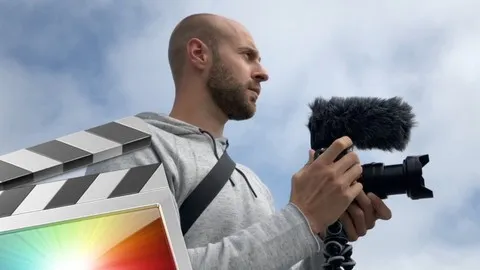
VR and 360 Video Production 
This course provides an introduction to the fundamentals of Virtual Reality (VR) and 360 video production. Participants will gain the skills necessary to create their own VR projects, from concept to completion. ▼
ADVERTISEMENT
Course Feature
![]() Cost:
Cost:
Free
![]() Provider:
Provider:
Coursera
![]() Certificate:
Certificate:
No Information
![]() Language:
Language:
English
![]() Start Date:
Start Date:
Self Paced
Course Overview
❗The content presented here is sourced directly from Coursera platform. For comprehensive course details, including enrollment information, simply click on the 'Go to class' link on our website.
Updated in [March 01st, 2023]
This course provides an introduction to Virtual Reality (VR) and 360 video production. Students will learn the basics of VR and 360 video production, including the tools and techniques needed to create VR content. Through a step-by-step process, students will gain the skills necessary to create their own VR projects. The course will also provide an overview of the different types of VR and 360 video production, as well as the best practices for creating successful projects. At the end of the course, students will have the knowledge and skills to create their own VR projects.
[Applications]
After completing this course, students should be able to apply their knowledge of VR and 360 video production to create their own projects. They should be able to use the tools and techniques they have learned to create immersive experiences for their audiences. Additionally, they should be able to use the skills they have acquired to troubleshoot any issues they may encounter while creating their projects.
[Career Paths]
1. VR Developer: VR developers create immersive virtual reality experiences for users. They use a variety of programming languages and software to create interactive 3D environments. VR developers must have a strong understanding of computer graphics, physics, and mathematics. As the demand for VR increases, so does the need for experienced VR developers.
2. 360 Video Producer: 360 video producers create immersive video experiences for viewers. They use specialized cameras and software to capture and edit 360-degree video content. 360 video producers must have a strong understanding of video production, editing, and post-production techniques. As the demand for 360 video content increases, so does the need for experienced 360 video producers.
3. VR/AR Designer: VR/AR designers create interactive virtual and augmented reality experiences for users. They use a variety of software and tools to create 3D environments and interactive experiences. VR/AR designers must have a strong understanding of user experience design, 3D modeling, and animation. As the demand for VR/AR increases, so does the need for experienced VR/AR designers.
4. VR/AR Engineer: VR/AR engineers create immersive virtual and augmented reality experiences for users. They use a variety of software and tools to create 3D environments and interactive experiences. VR/AR engineers must have a strong understanding of computer graphics, physics, and mathematics. As the demand for VR/AR increases, so does the need for experienced VR/AR engineers.
[Education Paths]
1. Bachelor of Science in Computer Science: This degree path focuses on the development of computer software and hardware, as well as the design of computer networks. It is an ideal degree path for those interested in developing VR and 360 video production applications. With the increasing demand for VR and 360 video production, this degree path is becoming increasingly popular.
2. Bachelor of Arts in Digital Media: This degree path focuses on the design and production of digital media, including VR and 360 video production. It is an ideal degree path for those interested in creating immersive experiences for viewers. With the increasing demand for VR and 360 video production, this degree path is becoming increasingly popular.
3. Bachelor of Science in Animation and Visual Effects: This degree path focuses on the development of animation and visual effects for film, television, and video games. It is an ideal degree path for those interested in creating immersive experiences for viewers. With the increasing demand for VR and 360 video production, this degree path is becoming increasingly popular.
4. Bachelor of Science in Game Design: This degree path focuses on the development of video games, including VR and 360 video production. It is an ideal degree path for those interested in creating immersive experiences for viewers. With the increasing demand for VR and 360 video production, this degree path is becoming increasingly popular.
Pros & Cons

Comprehensive overview of 360 production techniques and equipment

Excellent instruction and coursework

Great for learning the basics of VR and 360 content

Skill building and detailed learning

Referenced content is dated

Could go more in depth

Amateur level

Outdated for 2020
Course Provider

Provider Coursera's Stats at AZClass
Discussion and Reviews
0.0 (Based on 0 reviews)
Explore Similar Online Courses

Success - Achieve Success with Emotional Intelligence

Network Socket Programming in Python3 Practical (Remastered)

Python for Informatics: Exploring Information

Social Network Analysis

Introduction to Systematic Review and Meta-Analysis

The Analytics Edge

DCO042 - Python For Informatics

Causal Diagrams: Draw Your Assumptions Before Your Conclusions

Whole genome sequencing of bacterial genomes - tools and applications

Learn Final Cut Pro X Course Beginner To Intermediate

How to VLOG: Complete Beginner& Course


Start your review of VR and 360 Video Production